Researchers have designed protein qubits that can be produced by cells naturally, opening possibilities for precision measurements of tissues, single cells, or even individual molecules.
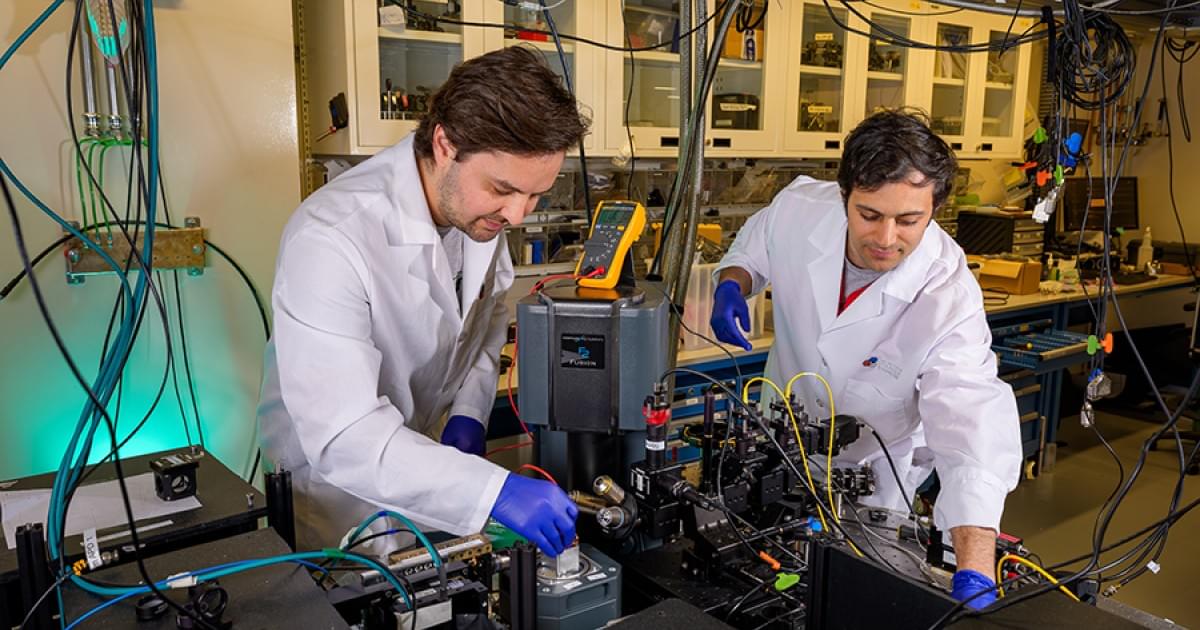

What does it take to turn the Sun into a power grid? Discover the step-by-step path from asteroid mining to a star-spanning megastructure.
Watch my exclusive video Dark Biospheres: https://nebula.tv/videos/isaacarthur–…
Get Nebula using my link for 40% off an annual subscription: https://go.nebula.tv/isaacarthur.
Get a Lifetime Membership to Nebula for only $300: https://go.nebula.tv/lifetime?ref=isa…
Use the link https://gift.nebula.tv/isaacarthur to give a year of Nebula to a friend for just $36.
Visit our Website: http://www.isaacarthur.net.
Join Nebula: https://go.nebula.tv/isaacarthur.
Support us on Patreon: / isaacarthur.
Support us on Subscribestar: https://www.subscribestar.com/isaac-a…
Facebook Group: / 1583992725237264
Reddit: / isaacarthur.
Twitter: / isaac_a_arthur on Twitter and RT our future content.
SFIA Discord Server: / discord.
Credits:
Building a Dyson Swarm… from Scratch.
Written, Produced & Narrated by: Isaac Arthur.
Graphics: Bryan Versteeg, Jeremy Jozwik, Ken York Sergio Botero.
Select imagery/video supplied by Getty Images.
Music Courtesy of Epidemic Sound http://epidemicsound.com/creator.
Chapters.
0:00 Intro What Is a Dyson Swarm?
5:49 Gathering the Materials.
9:40 Proto-Swarm: Our First Steps.
13:05 Mining the Solar System.
14:33 Beyond Mercury: The True Scale of the Swarm.
19:10 Ghosts of Friendship Past.
20:34 Building Habitats: How Much Mass Do We Really Need?
27:42 The Long Dawn of a Stellar Civilization.
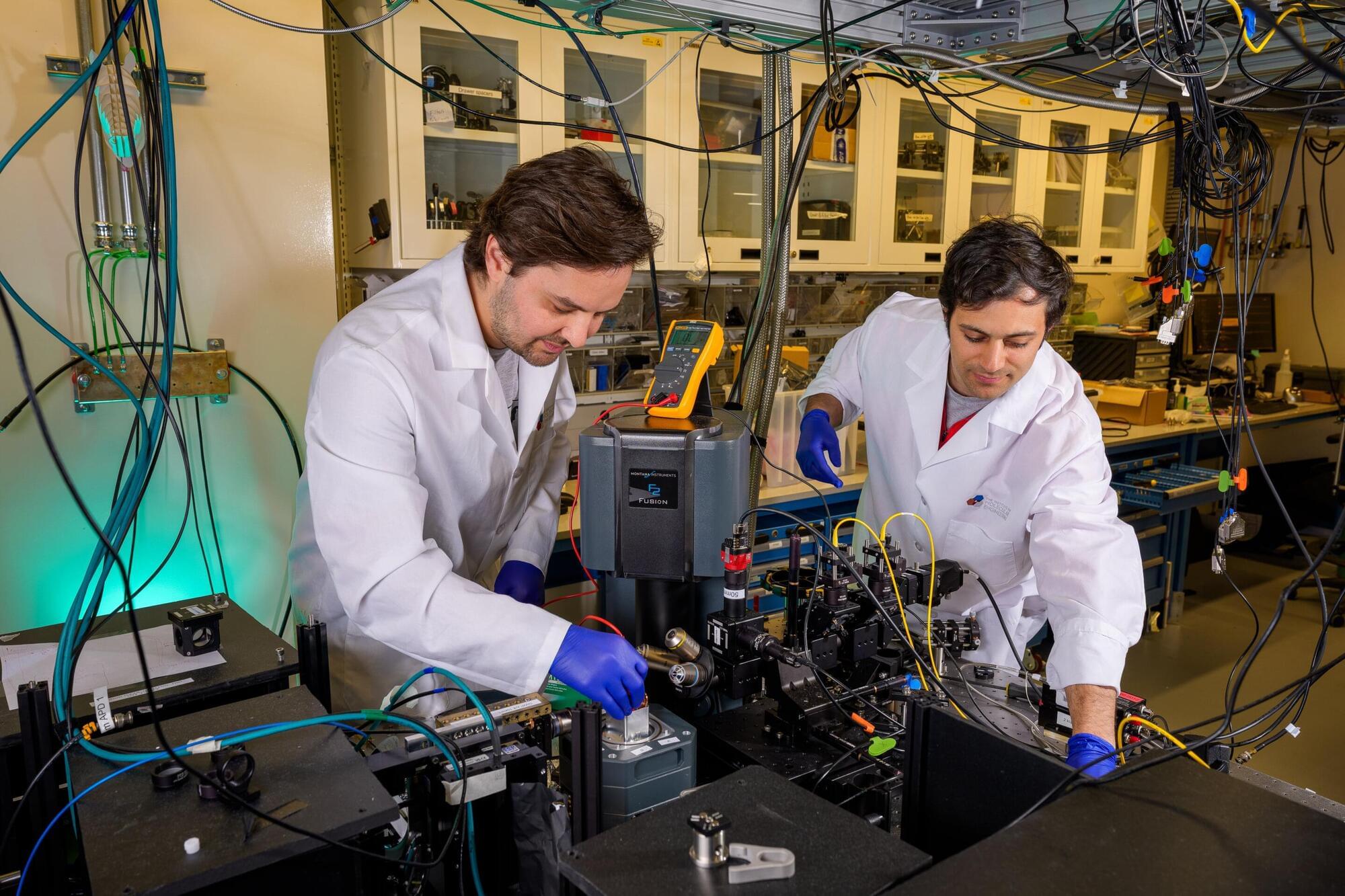
At first glance, biology and quantum technology seem incompatible. Living systems operate in warm, noisy environments full of constant motion, while quantum technology typically requires extreme isolation and temperatures near absolute zero to function.
But quantum mechanics is the foundation of everything, including in biological molecules. Now, researchers at the University of Chicago Pritzker School of Molecular Engineering (UChicago PME) have turned a protein found in living cells into a functioning quantum bit (qubit), the foundation of quantum technologies. The protein qubit can be used as a quantum sensor capable of detecting minute changes and ultimately offering unprecedented insight into biological processes.
“Rather than taking a conventional quantum sensor and trying to camouflage it to enter a biological system, we wanted to explore the idea of using a biological system itself and developing it into a qubit,” said David Awschalom, co-principal investigator of the project, Liew Family Professor of Molecular Engineering at UChicago PME and director of the Chicago Quantum Exchange (CQE). “Harnessing nature to create powerful families of quantum sensors—that’s the new direction here.”


Everyone who ever took a photo knows the problem: if you want a detailed image, you need a lot of light. In microscopy, however, too much light is often harmful to the sample—for example, when imaging sensitive biological structures or investigating quantum particles. The aim is therefore to gather as much information as possible about the object under observation with a given amount of light.

Nature, particularly humans and other animals, has always been among the primary sources of inspiration for roboticists. In fact, most existing robots physically resemble specific animals and/or are engineered to tackle tasks by emulating the actions, movements and behaviors of specific species.
One innate ability of some animals that has so far been seldom replicated in robots is shape morphing and camouflaging. Some living organisms, including some insects, octopuses and chameleons, are known to reversibly change their appearance, form and shape in response to their surroundings, whether to hide from predators, move objects or simply while moving in specific environments.
Researchers at Jiangnan University, Technical University of Dresden, Laurentian University and the Shanghai International Fashion Education Center recently designed new flexible and programmable textile metasurfaces that could be used to develop robots exhibiting similar morphing and camouflaging capabilities. These materials, introduced in a paper published in Advanced Fiber Materials, essentially consist of knitted structures that can be carefully engineered by adapting the geometric arrangement of their underlying interlaced yarn loops.
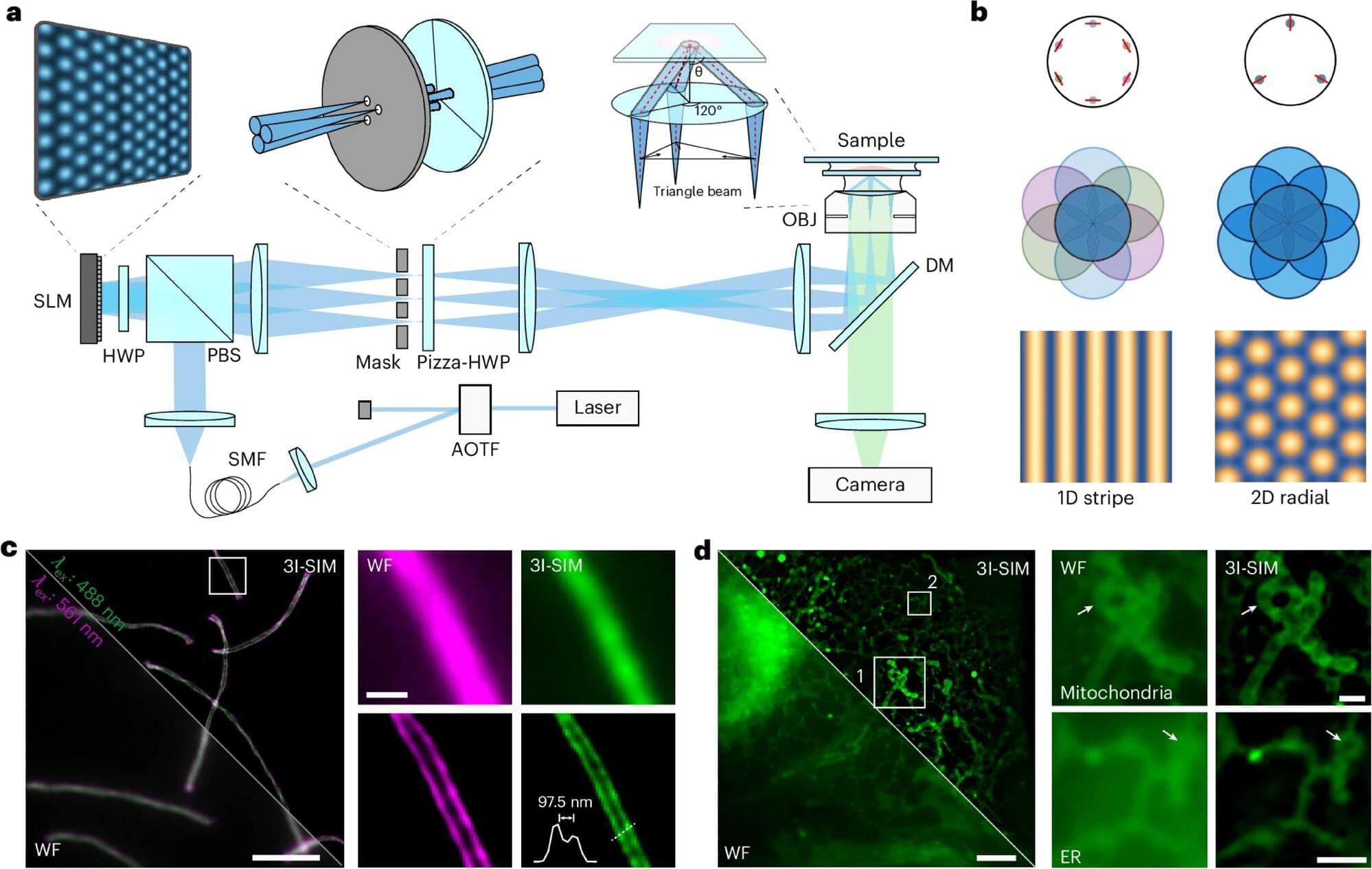
Structured illumination microscopy (SIM) is the most preferable system for live-cell super-resolution imaging. It enables the observation of intricate subcellular dynamics. However, conventional SIM has long relied on the complex rotation of one-dimensional stripe illumination at three angles, requiring nine exposures to reconstruct a uniform super-resolution image. This greatly hinders imaging speed and causes unnecessary photobleaching, limiting the available information flux in live-cell imaging.
Professor Xi Peng’s team from the College of Future Technology at Peking University has developed a triangle-beam interference SIM (3I-SIM) that enables gentler, sustained super-resolution live-cell imaging. This novel method upgrades the super-resolution imaging to an unprecedented kilo-Hz speed and half-day-long duration, enabling the study of complex and rapid biological processes with higher data throughput.
The work is published in Nature Photonics.
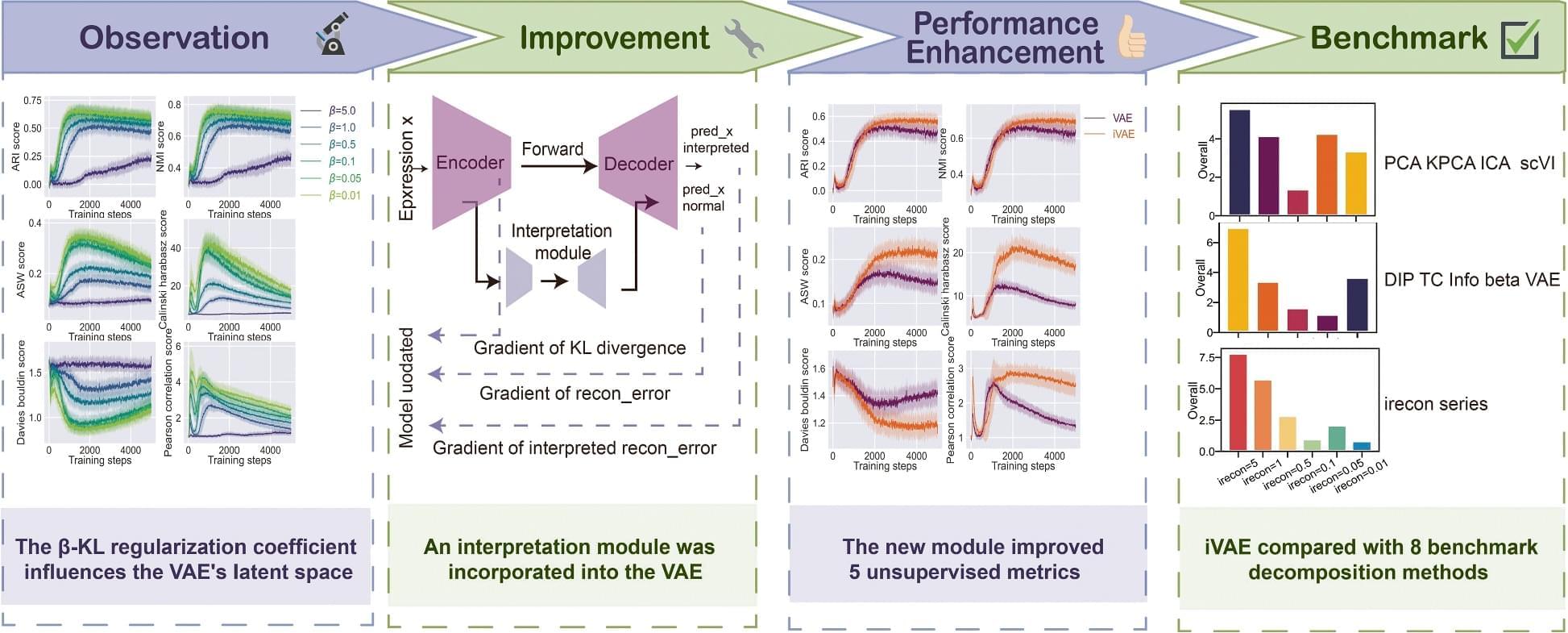
Variational autoencoders (VAEs) serve as essential components in large generative models for extracting latent representations and have gained widespread application in biological domains. Developing VAEs specifically tailored to the unique characteristics of biological data is crucial for advancing future large-scale biological models.
Through systematic monitoring of VAE training processes across 31 public single-cell datasets spanning oncological and normal conditions, we discovered that reducing the β β value which corresponds to lower disentanglement of VAE significantly improves unsupervised clustering metrics in single-cell data analysis. Based on this finding, we innovatively developed iVAE with an irecon module that, when benchmarked against 8 established dimensionality reduction methods across 5 clustering performance metrics, exhibited superior capabilities in representing single-cell transcriptomic data.
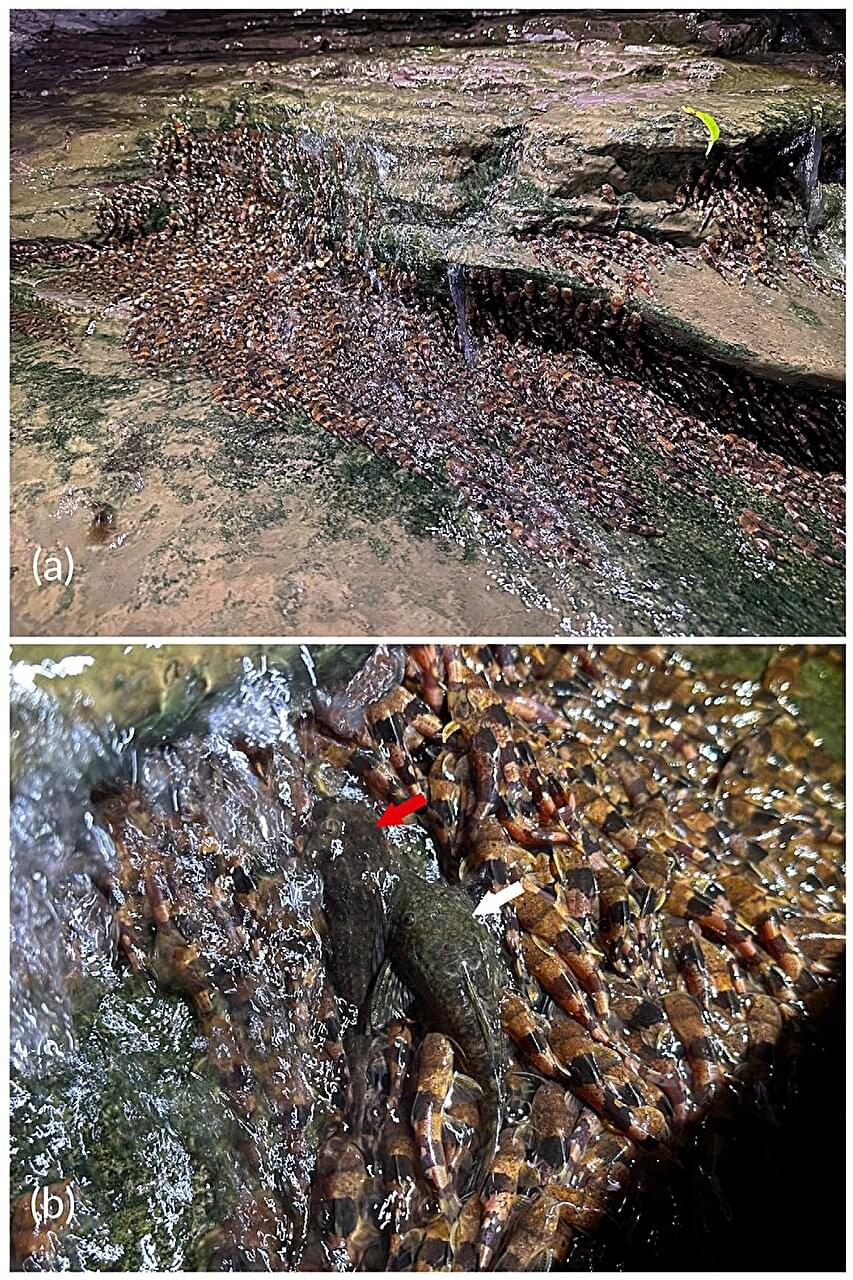
Nature often puts on incredible displays. A recent example caught on camera shows thousands of bumblebee catfish (Rhyacoglanis paranensis) climbing waterfalls in southern Brazil. This is the first time the species has been observed in such a large group and climbing, according to a study published in the Journal of Fish Biology describing the spectacle.
Environmental Military Police from Mato Grosso do Sul State spotted the catfish scaling slippery rocks between one and four meters high behind waterfalls on the Aquidauana River. The sighting occurred in November 2024 at the beginning of the rainy season, and a week later, a team of Brazilian scientists arrived to document the event.
They observed that the catfish’s climbing behavior depended on the time of day. During the hot afternoons, the fish sheltered under rocks and in shaded areas. They began climbing in the early evening as the sun was setting. The researchers also studied how the fish are able to climb. They keep their paired fins wide open and use lateral and caudal movements to push themselves forward. Scientists believe this is also aided by a suction mechanism that helps them stick to flat surfaces.
